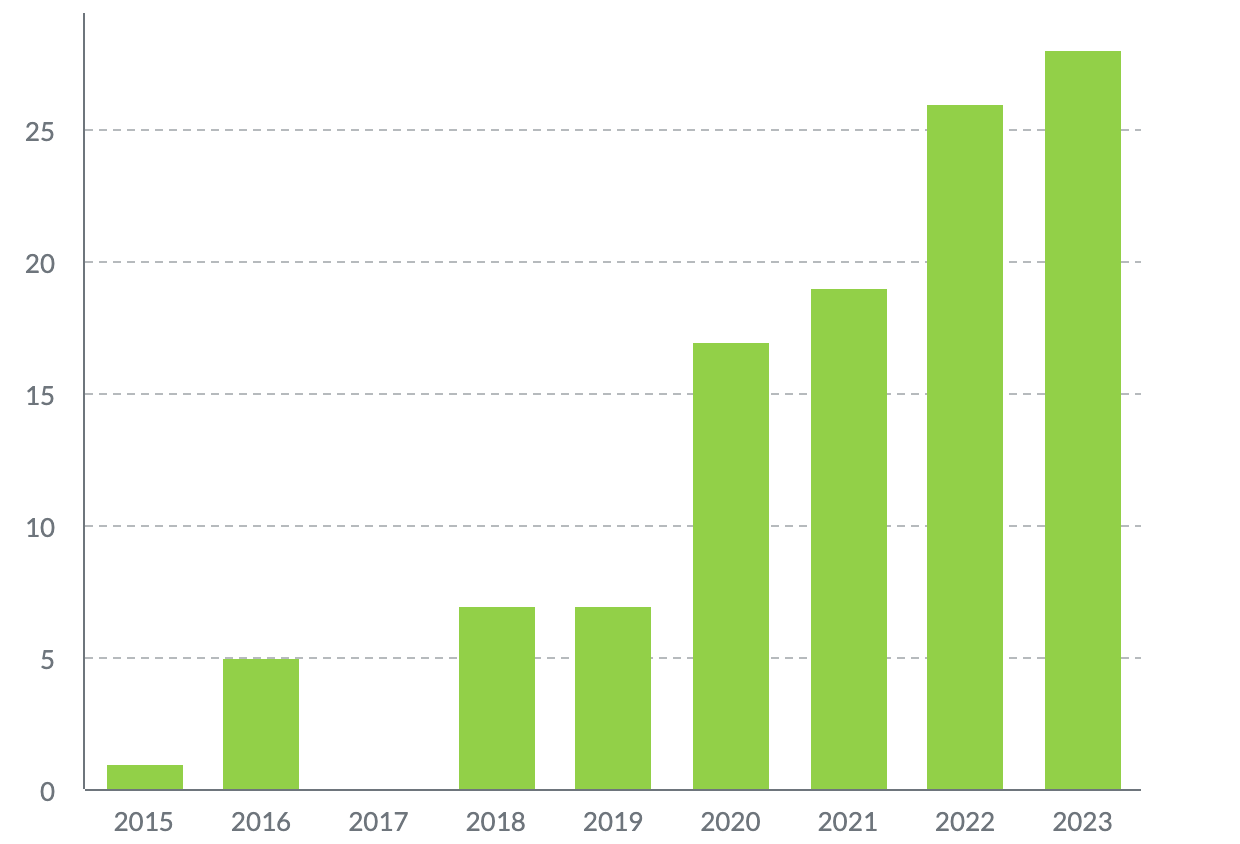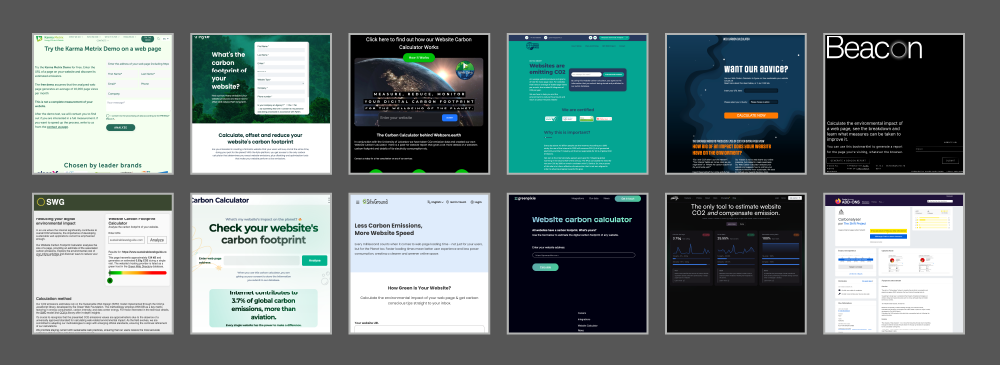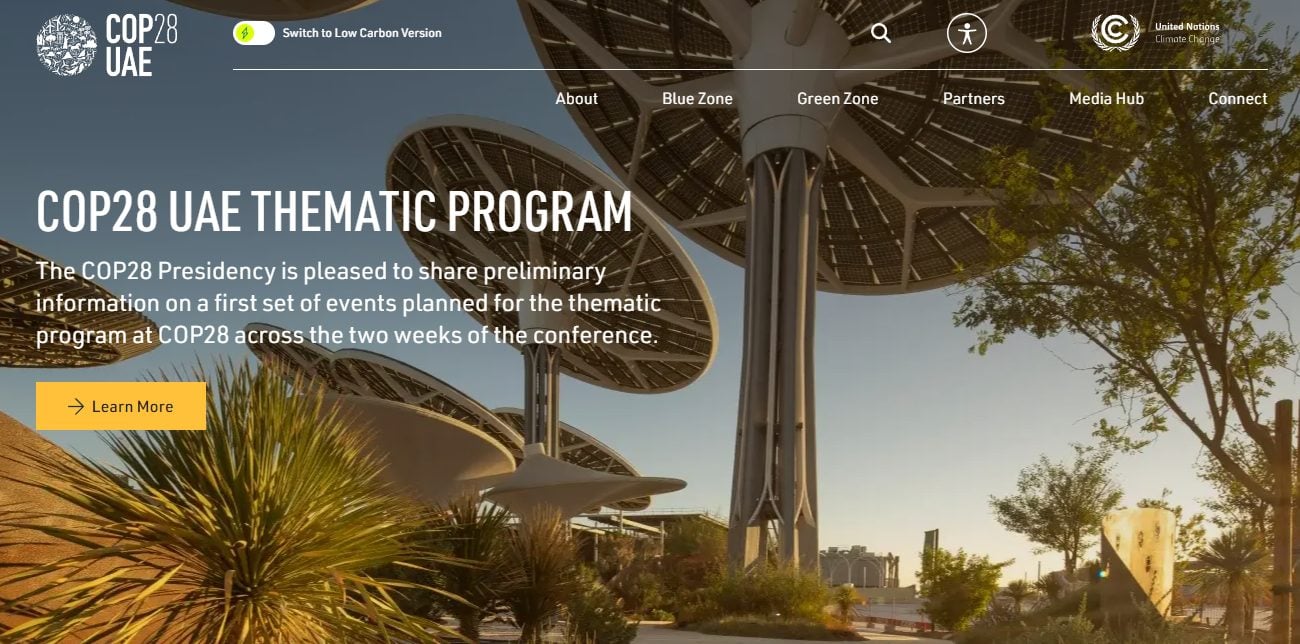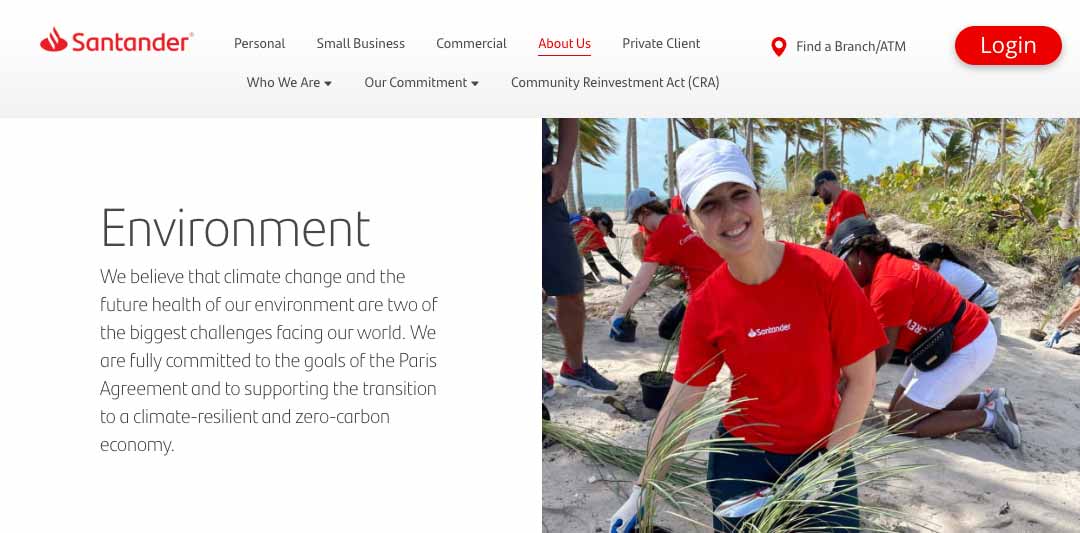Our Digital Greenwashing Guide

Use this digital greenwashing guide to help you make accurate sustainability claims about digital products, services, and programs while reducing risk as new and emerging legislation takes shape.
New regulatory guidance on greenwashing in the European Union (EU) and the United States may change how organizations can talk about their sustainability initiatives. In some cases, failure to make true claims could lead to potential fines or penalties.
How might this impact your digital marketing or digital sustainability efforts? In this post, we dig into the details and share several digital greenwashing examples.
What is Digital Greenwashing?
Greenwashing [ green-wosh-ing, -waw-shing ]: Activities by a company or an organization that are intended to make people think that it is concerned about the environment, even if its real business actually harms the environment.
— Oxford Learner’s Dictionary definition of Greenwashing
Greenwashing—the act of making inaccurate, misleading, or incomplete claims about the environmental impact or benefits of your product, service, or organization—has been around for many decades. However, the new EU and pending US greenwashing directives mentioned above will likely make this topic a more urgent concern for organizations across sectors moving forward.
Related, digital greenwashing applies the concept of greenwashing specifically to the digital products and services an organization creates or uses. Digital greenwashing has two important distinctions:
- Using technology to intentionally spread disinformation about an organization’s sustainability efforts.
- Making false or misleading claims about the environmental impacts of an organization’s digital products, services, or programs.
Many green digital claims don’t acknowledge that digital sustainability is complex and—given the vast number of third-party subscription services involved—doesn’t often include digital supply chain impacts. This undermines scope 3 emissions reporting for digital products and services, especially for Purchased Goods and Services (upstream category one) and Use of Products Sold (downstream category eleven). Also, it just scratches the surface of what’s really happening in web systems.
Given the often misunderstood nature of digital sustainability, the likelihood of an organization engaging in digital greenwashing—intentionally or not—is high.
How Widespread is Digital Greenwashing?
53% of green claims give vague, misleading or unfounded information. 40% of claims have no supporting evidence. Half of all green labels offer weak or nonexistent verification. There are 230 sustainability labels and 100 green energy labels in the EU, with vastly different levels of transparency.
— EU Greenwashing Directive
With over half of companies’ green claims offering vague or otherwise misleading information, greenwashing is a significant problem that’s on the rise—hence the need for legislation.
However, digital greenwashing is nowhere near as widespread. As a still nascent practice, digital sustainability has yet to reach the global business community’s collective consciousness.
With that being said, we could see a rise in digital greenwashing as:
- Green IT and related practices become more commonplace, and
- Legislation around the world shifts toward more transparency, especially for climate disclosures.
This is particularly true when people make claims about digital emissions and ‘green’ websites. We’re already seeing discrepancies in how organizations talk about these things. This can drive mis/disinformation. As more teams and organizations begin adopting digital sustainability practices, we must be vigilant in ensuring the claims they make are accurate and truthful.

The Consequences of Greenwashing
Greenwashing litigation is rising around the globe (pdf, see pp 39-40), from just a few cases in the United States a decade or so ago to dozens by 2023 (see image above). Sources list a variety of reasons for lawsuits, including:
- Disinformation: Making false claims or spreading inaccurate information.
- Full disclosure: Statements that withhold information or otherwise don’t tell the whole story.
- Scientific data: Flawed calculations or incomplete evidence leads to false claims.
- Ratings or labels: Product or service labels offer misleading information about environmental credentials.
- Net zero: Confusion around carbon offsets and net zero claims translate to organizations making misleading statements about their emissions.
New regulatory greenwashing guidelines could put any one of these issues front-and-center for organizations across sectors in the near future, especially when fines or penalties are associated with legislative non-compliance. We’re likely to see an explosion of lawsuits moving forward once these laws go into effect.
For a broader list of policies that affect digital sustainability, check out Web Sustainability Laws & Policies by the W3C Sustainable Web Design community group.
However, legal or financial risks are not your only concerns. Others include:
- Loss of trust and damage to reputation and/or brand image
- Lost customers and associated revenue
- Damage to client and partner relationships
- Loss of advertising or other revenue
- Investigations from regulators or watchdog groups
- Increased employee turnover
- Higher insurance costs
- Difficulty attracting investors (or donors if you’re a nonprofit)
The message here is clear: make truthful statements about sustainability efforts, backed up with scientific data, to improve your organization and avoid fines or lawsuits. This includes marketing claims related to digital products and services.
Greenwashing vs. Greenhushing
Executives should be transparent about their sustainability successes and failures rather than trying to massage the perceptions of the market. Eventually regulators, such as accounting bodies, may make ESG disclosures compulsory, finally closing down the greenhushing option.
— Planet Tracker, Greenhushing — Sophisticated Greenwashing?
Unfortunately, the backlash to companies’ greenwashing has led to a rise in greenhushing, where companies downplay, refuse to report, or even talk about their sustainability efforts. This is problematic for several reasons:
- In the middle of this climate emergency, we need organizations of all sizes, in all industries and sectors, to step up and share knowledge about their sustainability efforts, continuous improvement journeys, processes, and so on.
- Greenhushing can lead consumers to believe that a company is more sustainable than it actually is. This causes confusion and leads to mis/disinformation.
- Similarly, companies use vague or downplayed sustainability claims to attract a green valuation from investors, regardless of whether they actually walk the walk or not.
For digital products and services, greenhushing is a bit of a mixed bag. It is understandable that an organization might not want to talk about something they don’t readily understand, like digital sustainability. Also, all organizations want to avoid risks related to sustainability initiatives.
However, it is also important to share digital sustainability practices precisely because they are so rare, especially in traditional businesses. This tension is common in sustainability circles, as several of the examples below show. Sustainability is everyone’s responsibility.
Marketing Pitfalls and Digital Greenwashing
Unfortunately, potential marketing pitfalls in sustainability work are everywhere. What’s defined as greenwashing will vary by product, service, regulator, and jurisdiction. When marketing and communications teams don’t clearly understand how to tell a meaningful sustainability story backed up by actions and facts, this puts organizations at risk.
For a more comprehensive list of terms and types of greenwashing, read Greenwashing Terms, Explained by the Greenwash Action Lab.
What’s more, given that digital sustainability is often misunderstood, it is especially vulnerable to greenwashing:
- Lack of understanding: It is easy to make false claims if your marketing team doesn’t fully comprehend your organization’s digital sustainability initiatives.
- The pace of change: What constitutes ‘best practices’ in tech and digital marketing changes all the time. For many organizations, especially resource-constrained nonprofits, it can be hard to keep up.
- Competition: The digital marketing industry is extremely competitive with many organizations racing to be first to publish, first to market, etc. This move fast and break things mentality often leads to mis/disinformation, especially when it comes to digital sustainability claims.
The combination of an ever-changing legislative landscape and an easily misunderstood emerging discipline creates an environment that’s ripe for digital greenwashing. With that in mind, let’s look at some examples.
Digital Greenwashing Examples
Compiling this list was tough. It required us to look critically at ourselves and our industry. Some of these organizations are doing potentially great things. However, in the name of transparency, continuous improvement, and accountability in a growing digital sustainability industry, it is our responsibility to assess as we go.
Also, there are most likely many examples of digital greenwashing that we’ve missed. However, we chose the examples below as representative of the potentially growing digital greenwashing problem.

Example One: Green Website Badges
Proclaiming your website is more green than it actually is spreads misinformation in an emerging discipline that should be grounded in truth and transparency.
What it is
Organizations create ‘green’ web badges for customers to use on their websites. These tags are intended to showcase a website’s green credentials based on hosting choices, purchased carbon offsets, and other schemes.
Why it’s greenwashing
While green web hosting is an important step toward creating an internet that’s entirely powered by renewable energy, it is only one piece of a much larger puzzle. Yes, it is admirable to commit to powering your hosting with renewable energy. However, the web has many moving parts, each of which present significant emissions challenges.
Claiming that a website is ‘300% green’ because of a hosting choice—as in the example above from GreenGeeks—is misleading. It ignores emissions associated with other parts of the system, like end user devices, network hardware, third-party services, and so on.
Plus, these badges don’t consider other environmental impacts—like water use, e-waste, rare earth mineral mining, and so on. Instead, green website badges rely on potentially deceptive marketing messages.
What to do instead
Consider the following:
- First, share details about your green hosting choice: who, why, how, etc. Include this information in blog posts and annual impact reports. Back up claims with clear data and statistics. Don’t tout your green credentials, but rather educate and inform.
- Do your level best to reduce emissions associated with digital products and services first before considering offsets. Then, only use carbon offset solutions from verified providers.
If you still feel compelled to use a website badge, make it an opportunity to educate people about sustainability across the web. Link to blog posts that clearly explain these issues rather than the hosting provider’s homepage, which serves no one other than the provider.
Most importantly, be transparent about how far you still have to go. We’re all learning in real-time when it comes to digital sustainability. Being clear about this fact encourages trust.

Example Two: Digital Emissions ‘Calculations’
There are now dozens of online website carbon tools. Many of them offer free digital carbon estimates. Unfortunately, these estimates are used to promote misleading claims.
What it is
Companies use data from online greenhouse gas (GHG) estimation tools to make unclear claims about emissions from their digital products and services. Sometimes this is done using website badges, similar to the example above. Other times, the misleading data appears in impact reports, social media posts, press releases, online articles, and so on. This is problematic.
Why it’s greenwashing
Similar to example #1, the figures offered by most ‘carbon calculators’ only represent broad stroke estimates for a complex and always-changing technology system at a single point in time. Worse, some companies behind these tools use them as excuses to drive carbon offset purchases, which isn’t the most viable or recommended approach to digital sustainability.
These tools are great for jumpstarting conversations within organizations that wouldn’t otherwise prioritize digital sustainability. However, the main problem lies in translating the information they provide to organizational marketing campaigns and communications strategies. When companies don’t clearly acknowledge data gaps, their claims are misleading. The language we use to describe digital GHG models matters.
What to do instead
IAB Europe’s Sustainability Standards Committee offers clear language recommendations on how to talk about your digital emissions evaluation initiatives. For example:
- Use evaluation or assessment over measurement.
- Consider emissions estimates vs. emissions calculations.
- To represent the full spectrum of greenhouse gases, opt for GHG assessment or GHG evaluation over carbon-specific language.
- Similarly, use GHG Estimator or GHG Models over carbon calculators.
We always strive to improve how our own web sustainability tool, Ecograder, and the Sustainable Web Design site present this information. We encourage others to do the same.
Beyond using IAB’s language guidelines, also consider investing in a digital life cycle assessment to better understand the full environmental impact of digital products and services you create and use. Free online estimation tools don’t offer a complete picture of your website’s environmental impact.

Example Three: COP28 Website
One of the world’s highest profile climate change events pulls off the ultimate in digital greenwashing.
What it is
The COP28 website presents users with a supposedly climate-friendly web solution that includes ‘low-carbon’ options. However, upon further inspection, not only do these options not reduce emissions, the entire site is designed and built in such a way that any potential sustainability benefits are negated.
Why it’s greenwashing
COP is one of the most high-profile climate change events in the world. As the decision-making body of a global climate organization, it should prioritize sustainability in every single thing it does. Unfortunately, that’s not what happened with this website.
For a complete breakdown of all the sustainability problems with this website, please read CSS in Real Life’s excellent Greenwashing and the COP28 Website or Fershad Irani’s COP28 UAE: A Low Carbon Website Review.
What to do instead
Here are a few things the COP team could do to improve this situation:
- First, work with an ethical agency partner that prioritizes accessibility and sustainability in all their work.
- Second, create a website that showcases digital sustainability as an impactful design strategy rather than an afterthought. The lowwwcarbon showcase has many great examples.
- Finally, and perhaps most importantly, use the website as an opportunity to educate visitors on why digital sustainability is important and how it’s done.
Hosting the event with an oil baron as its leader aside, this was another missed opportunity for COP28. Maybe we’ll see improvements in future COP websites? I’m not holding my breath, but it certainly would be nice for the world’s highest profile climate event to get its digital sustainability act together. Do better.

Example Four: Tech Net Zero Claims
Companies frequently make absolute claims about carbon neutrality of a particular product or service, which rely on emissions offsetting schemes without taking any further action to reduce companies’ own emissions. There is a consistent line of greenwashing cases challenging overreliance on or lack of transparency around carbon offset schemes.
— Ekaterina Aristova, Oxford University, Greenwashing Exposed: A Close Look at the Existing Case Law (Part 3)
What it is
Hosting providers, Big Tech companies, and other large technology firms make net zero claims without clear commitments to back these claims up. This is another reason why tracking and reducing Scope 3 technology emissions is so challenging.
Why it’s greenwashing
Much criticism is leveled at companies’ net zero commitments. Many rely on ineffectual carbon offsets schemes. These ‘permission to pollute’ approaches allow them to operate business as usual without meaningfully addressing emissions across their value chain—from internal operations to vendors, suppliers, partners, and so on.
This is especially problematic in the tech sector. While many Big Tech companies were early adopters of renewable energy, which is great, this enables third-party providers to ride the coattails of another company’s efforts without making meaningful commitments of their own. Again, the web is built on third-party services, which complicates effectively tackling Scope 3 emissions.
For example, hosting providers have told us that they are ‘green’ because they use Google Cloud Platform’s digital infrastructure (see image above). While it’s preferable to use green digital infrastructure whenever you can, this is not a substitute for clear sustainability policies and practices of your own, particularly when it comes to Scope 3 emissions. This enables third-party providers to greenhush their own efforts by doing the bare minimum.
Plus, even Google admits that it hasn’t reached net zero emissions yet, which is a moving target for every company working toward it.
What to do instead
We’re the first to admit that it’s hard to find a good green hosting partner. However, if there’s any hope to address climate change and other ecological crises in meaningful ways, we must tackle Scope 3 emissions as quickly as possible.
The web has shown that it’s possible to build successful digital products by stringing together third-party services. With the right motivation, tracking energy and emissions across these systems should be within our grasp. This must be a core component to any tech company’s net zero strategy.

Example Five: Big Finance Sustainability Claims
Non‑state actors cannot claim to be net zero while continuing to build or invest in new fossil fuel supply. Coal, oil and gas account for over 75% of global greenhouse gas emissions. Net zero is entirely incompatible with continued investment in fossil fuels. Similarly, deforestation and other environmentally destructive activities are disqualifying.
— Integrity Matters: net zero Commitments by Businesses, Financial Institutions, Cities and Regions, U.N. Secretary General Expert Group
What it is
Global banking conglomerates make significant sustainability claims, including for their (often technology-enabled) products and services, as in this example from Santander Bank. However, these commitments merely amount to lip service when compared to continued fossil fuel, mining, or deforestation investments.
Why it’s greenwashing
This is a classic wag the dog example. Highlighting green technology projects while continuing to invest significant resources in fossil fuel projects or weapons manufacturing is pure hypocrisy.
This once again underscores the importance of prioritizing clear sustainability claims across an organization’s value chain. These companies must follow up their claims with a transparent content strategy that outlines in great detail exactly how they’re achieving these goals and where gaps exist between goals and reality.
What to do instead
As digital sustainability continues to grow, more projects will require funding. Where the money comes from for these projects matters. Moving your money away from these types of banks is probably one of the most meaningful things your organization can do. A B Corp bank like Climate First Bank or other members of the Global Alliance for Banking on Values can help.
Not sure if your bank funds climate chaos? Check out Bank.Green to find out.
Seven Action Items to Avoid Digital Greenwashing
Greenwashing confuses the public, minimises the severity of the global climate crisis and so ultimately pushes us closer to climate catastrophe.
— Harriet Lamb in Number of adverts banned for ‘greenwashing’ triples in a year, The Independent
Organizations must take responsibility for the social, economic, and environmental impacts of their digital products and services. To reduce the risk of digital greenwashing, consider these seven action items:
- Understand ‘why’: First, whether you’re looking at digital emissions or broader digital sustainability efforts, ask why is it important to make a claim? Is it for reporting compliance, to create an improvement roadmap, to keep up with the competition, to attract investors, or to satisfy a request from leadership? The rationale matters. Spend time figuring it out.
- Assess risk: Next, before making any digital sustainability claims, assess the risk of doing so. What unintended circumstances might come from your actions?
- Business ecosystems: Explore the systems in which you do this work through activities like stakeholder mapping to inform business decisions and better understand stakeholder needs.
- Sustainability frameworks: Align your sustainability storytelling and reporting efforts with existing frameworks or known standards whenever possible to reduce potential pitfalls.
- Be specific: Sweat the details. Specificity matters, especially if you want to avoid lawsuits or fines.
- Data-driven decisions: Define—and use—a sustainable data strategy to back up your claims with data and clear statistics.
- Continuous improvement: Own your mistakes and work to improve out in the open; share what you learn along the way and ground all your work in honesty and transparency.
It is surprising how few companies successfully address the full list above. Good data and digital governance practices will go a long way toward operationalizing digital sustainability practices within your organization. However, this requires buy-in from leadership and an educated marketing and communications team tasked with training both internal and external stakeholders on the issues.
Digital Greenwashing: Final Thoughts
Technology can play a significant role in reducing greenwashing by providing tools and resources that promote transparency, accountability, and accurate measurement of environmental impact.
— Unaise Urfi, The Role of Technology in Greenwashing
Technology can help us design and build a more sustainable future. However, when we use it to intentionally misinform people or, worse, create technology that itself has destructive traits which undermine social and environmental progress, we sabotage our chances to successfully achieve this future. This is unacceptable, especially in the face of a climate crisis.
What’s more, when marketing and communications leaders don’t educate themselves or take due diligence steps to ensure their sustainability claims are accurate and truthful, this puts the organizations they work for at legal and financial risk. To address this, we must redefine success in marketing so it does no harm.
We hope you found this digital greenwashing guide useful. Did we miss something? Please let us know.
Finally, this is not legal advice. Should you require legal assistance, please consult a lawyer. 🙂



